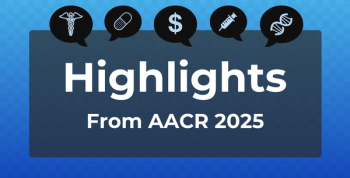
Individualized Antimicrobial Treatment, Prophylactic Regimens May Help With GVHD After Liver Transplant
A recent study aimed to provide insight and guidance for managing graft-versus-host disease in patients after liver transplantation.
While
The retrospective study reviewed all adults at 3 Mayo Clinic Transplant Centers who experienced acute GVHD after liver transplantation between 2010 and 2021. Of 4585 patients who underwent lung transplantation, 12 (0.3%) had subsequent GVHD, 10 of whom (83.3%) developed severe infections that resulted in death.
The median patient age was 62 years, and median time from transplant to GVHD diagnosis was 49 days. A total of 7 patients were given methylprednisolone for induction immunosuppression, 4 were given methylprednisolone plus basiliximab, and 1 patient who had both kidney and liver transplant was given antithymocyte globulin (ATG) and basiliximab. At the time of GVHD diagnosis, 12 patients were on prednisone for maintenance immunosuppression, 10 were on tacrolimus, 7 were on mycophenolate mofetil, 1 was on cyclosporin, and 1 was on sirolimus.
Rash, diarrhea, and fever were most commonly the first symptoms of GVHD, which was diagnosed via bone marrow biopsy, stomach/duodenum/colon biopsy, skin biopsy, and peripheral blood chimerism. The median absolute neutrophil count (ANC) at diagnosis was 2,310 cells/µL, and the median ANC low point after GVHD diagnosis was 410 cells/µL. Recombinant human granulocyte colony-stimulating factor injections were given to 10 patients.
In the overall cohort, the median survival time was 43 days after GVHD diagnosis, and 10 patients developed severe infections resulting in mortality. One of the patients who did not experience GVHD had no significant infectious complications post-transplant, and the other developed a low-grade Streptococcus mitis central-line related bloodstream infection but was treated successfully and did not relapse.
Most of the patients who developed severe infections experienced more than 1 infection, and they all developed sepsis or bacteremia. Prophylactic levofloxacin was administered to 7 patients at the time of infection, and 3 patients experienced concomitant Clostridioides difficile colitis. All patients received prophylactic anti-fungal treatment, but 4 developed invasive fungal infections—3 were already on anti-fungal prophylaxis, and 1 was not yet on anti-fungal treatment at the time of infection. Depending on cytomegalovirus (CMV) serostatus, patients received either acyclovir or valganciclovir.
“Antimicrobial prophylaxis strategies in most cases were based on the degree of neutropenia — these include levofloxacin for bacterial prophylaxis, nebulized pentamidine for Pneumocystis jiroveci pneumonia prophylaxis, posaconazole for invasive fungal prophylaxis, and valganciclovir based on CMVs tatus,” the authors wrote. “All GVHD patients with severe infections succumbed to these complications.”
Although it covers a small cohort, the study’s findings reiterate that infection is a main cause of mortality in patients with GVHD after lung transplantation. Managing these infections has proven challenging, and the authors note that accurate histopathological diagnosis is paramount, given GVHD has similar manifestations to invasive CMV.
The study also highlights intense antimicrobial prophylaxis as a potential approach, considering local microbiologic data and an appropriate route of drug delivery for optimal absorption. The authors suggest verifying drug levels to ensure absorption.
“Individualized antimicrobial treatment, prophylaxis and monitoring strategies remain a critical component of GVHD management,” they concluded. “Further study to optimize these practices is required.”
Reference
Chesdachai S, Udompap P, Yetmar ZA, et al. Infectious complications in acute graft-versus-host disease after liver transplantation. Transpl Infect Dis. Published online May 21, 2022. doi:10.1111/tid.13843
Newsletter
Stay ahead of policy, cost, and value—subscribe to AJMC for expert insights at the intersection of clinical care and health economics.









































